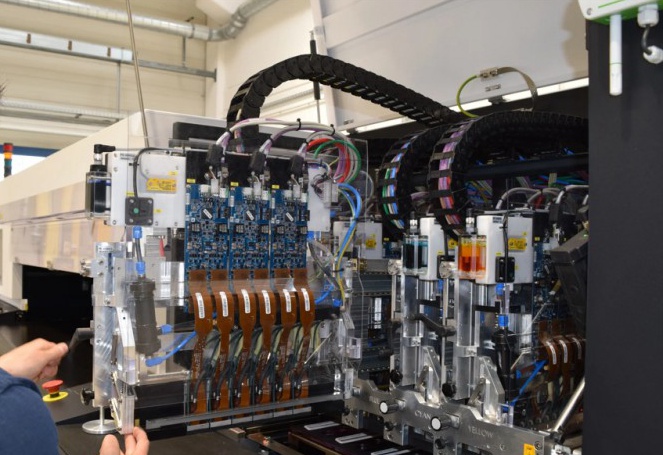
With the popularity of digital printing technology, more and more textile manufacturers use digital printing machines to improve production efficiency and product quality. However, many companies have found that the amount of waste ink from digital printing machines has gradually increased during use. This phenomenon not only increases production costs, but also causes potential pollution to the environment. So, what is the reason for the increase in waste ink from digital printing machines?
Here Are Detailed Explanation of Six Major Factors:
1. Blockage or Wear of the Print Head
The print head of a digital printing machine is the core component of ink jetting, and the state of the print head directly affects the efficiency of ink. If the print head is blocked or worn, the ink jetting may be uneven, resulting in a decrease in print quality. In order to ensure the printing effect, the machine may automatically perform a cleaning procedure and use a large amount of ink to unclog the nozzle, which will greatly increase the generation of waste ink.
2. The Ink Type Does not Match the Substrate
Different inks are suitable for different types of substrates. If the ink used does not match the substrate, problems such as bleeding and insufficient adhesion may occur. In order to achieve the ideal printing effect, it may be necessary to adjust the printing parameters or replace the ink multiple times, and the waste ink generated during these adjustments will increase significantly. In addition, in order to prevent uneven colors or poor printing effects, the machine may use more ink during operation, further increasing waste ink.
3. Improper Color Management and Print Settings
Color management is a very important part of the digital printing process. Inaccurate or improperly color profiles may cause color deviations, requiring multiple adjustments to achieve the desired color effect. During this process, the digital printer may perform multiple test prints, which usually waste a lot of ink. In addition, over-saturation or unnecessary color superposition will also increase ink consumption, resulting in more waste ink.
4. Untimely Equipment Maintenance
Digital printing machines require regular maintenance to ensure their normal operation. If the inkjet printer is not maintained in a timely or standardized manner, problems may occur in the print head, ink system or other components. For example, air bubbles or sediment in the ink pipe may affect the normal flow of ink, resulting in poor printing results. In order to restore print quality, operators may repeatedly clean or replace parts, and these operations will also generate a lot of waste ink.
5. Frequent Cleaning
Digital printing machines usually perform automatic cleaning procedures regularly to keep the print head clean and jetting accuracy. However, too frequent cleaning procedures will lead to a waste of ink. Especially after the machine has not been used for a long time, the automatic cleaning system may use a lot of ink to restore the normal state of the print head, which will also lead to an increase in waste ink.
6. Complexity of Printing Tasks
Different printing tasks have different requirements for the amount of ink used. For printing tasks with rich colors and complex patterns, higher ink consumption is usually required. If the task is modified or corrected many times, the amount of ink consumed by these repeated printings will increase significantly. In addition, the color superposition and fine processing of complex patterns may also lead to an increase in waste ink.
The phenomenon of increased waste ink in
digital printing machines is caused by the combined effect of multiple factors, including the state of the print head, the matching degree of ink and substrate, color management, equipment maintenance, and the complexity of the printing task. In order to reduce the generation of waste ink, enterprises should strengthen the daily maintenance of equipment, reasonably select
digital inks and substrate, and optimize the printing parameter settings. In addition, training operators to master the professional knowledge of color management and equipment operation can also help reduce waste ink and improve production efficiency.
 Sep 25,2024
Sep 25,2024
